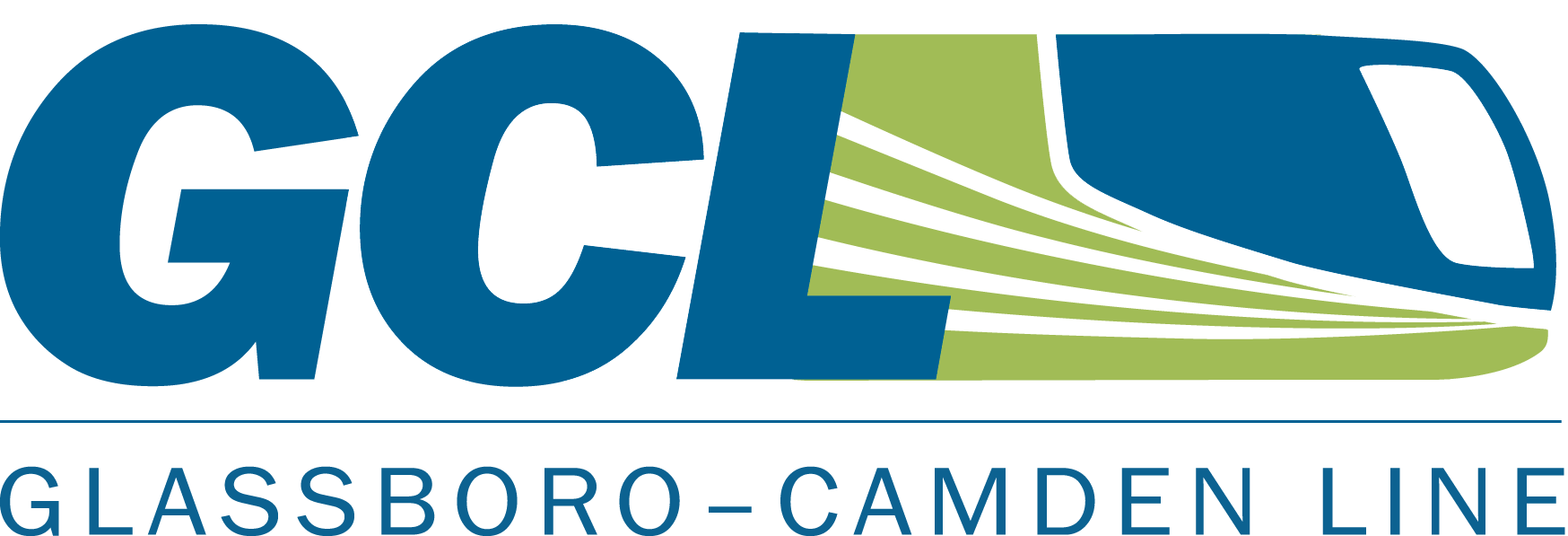GCL Frequently Asked Questions
Welcome to the FAQ page. Here you will find the answers to the frequently asked questions regarding the project. You can always submit a direct question or comment to the GCL Project Team through the website.

General Project
The Glassboro-Camden Line (GCL) is a proposed 18-mile light rail passenger line that will operate between Glassboro and Camden.
The purpose of the GCL is threefold:
- To improve transit service along the Glassboro-to-Camden corridor.
- To increase mobility.
- To improve links between people, communities, jobs, and activity centers.
The GCL corridor is located along the existing rail corridor between Glassboro and Camden in Gloucester and Camden counties. The 18-mile corridor transverses the communities of Glassboro, Pitman, Sewell, Mantua Township, Deptford Township, Wenonah, Woodbury Heights, Woodbury, Westville, Brooklawn, Gloucester City, and Camden.
Light Rail Transit (LRT) is a term used to refer to a rail system with rapid transit style features that usually operate in private rights-of-way separated from other traffic. LRT generally has a lower capacity and lower operating speed than heavy rail and metro systems, but a higher capacity and higher speed than traditional street running tram systems.
Three major public agencies have joined forces and renewed their commitments to the GCL project.
- Delaware River Port Authority (DRPA) serves as Project Manager for the Preliminary Engineering Design Phase.
- As Project Manager, the Delaware River Port Authority is responsible for managing the overall project and fulfilling the tasks needed to develop the preliminary engineering design phase bid documents that will be used to procure a DBOM contractor.
- South Jersey Transportation Authority (SJTA) serves as a project/funding partner.
- In this role, the South Jersey Transportation Authority assists with the funding of the project and advises on project deliverables when needed.
- NJ TRANSIT serves as the owner.
- As a project partner, NJ TRANSIT has been identified as the Agency of Record, and it is anticipated they will assume the lead role to deliver the project through procurement and construction.
The procurement method for the GCL is expected to be a Design, Build, Operate, Maintain, and Finance project delivery. This is referred to as DBOM(F). At this point in the preliminary engineering design phase, an operator has not been selected. Competitive responses to requests for proposals (RFPs) will be solicited and evaluated by the Project Team.
It is anticipated that GCL will be delivered using a Design-Build-Operate-Maintain (DBOM) contract. This approach streamlines the project by combining detailed design and construction under a single contractor. Once the construction is complete and the system is in service, that same contractor consortium will be retained to operate and maintain the system for a specified period of time. More information and helpful graphics explaining DBOM contracts can be found here.
The GCL team is preparing a set of bid documents that will be provided as part of an open bid process where qualified contractors will submit proposals to design, build, operate, and maintain the GCL. While the price will be subject to the bid process the Projected Capital Investment Cost is anticipated to be between $1.6 – $1.8 billion.
A “Quiet Zone” is a section of a rail line at least one-half mile in length that contains one or more consecutive at-grade crossings at which train horns are not routinely sounded as trains approach the crossings. A quiet zone would apply to both freight and passenger trains. The GCL Project Team is exploring the feasibility of incorporating quiet zones along the alignment to alleviate concerns about the noise levels associated with the new service. Enhanced safety measures (such as four-quadrant gates) are required to be approved for a quiet zone. These safety measures will be implemented throughout the GCL’s alignment.
More information on the GCL’s Quiet Zones can be found here.
The GCL route was selected as part of the Southern New Jersey to Philadelphia Mass Transit Alternatives Analysis Study. The Alternatives Analysis was completed in 2009. The study evaluated 5 Alternatives along 4 corridors in NJ and ranked Alternatives based on various criteria including Environmental Impacts. The Conrail Corridor was chosen as the Locally Preferred Alternative and advanced through the EIS process which was completed in 2021.
Each GCL train will carry more than 200 commuters to and from their destinations. By comparison, a bus holds 71 passengers, while a car transports up to 4. With fewer cars on the road, travel becomes faster, cleaner, and more efficient for all of us sharing South Jersey roads. The GCL will consolidate commuters into one vehicle, reducing traffic delays and providing improved transportation options for those who live, work, and play in Camden and Gloucester counties, enriching the overall quality of life.
In the first year alone, it is projected that ridership on the GCL will eliminate more than 27,000 peak-hour vehicle miles traveled. That contributes to a reduction in volume on I-295, I-676, NJ 55, and Route 130, as well as cuts in noise, emissions, and road deterioration.
The GCL will bolster economic competitiveness in South Jersey, create a robust and resilient real estate market, and improve quality of life, locally and throughout the region.
By linking people to major medical and academic research institutions and other employment centers, the GCL will increase the pool of workforce candidates, customers, and patrons, and expand opportunities for discovery, healing, and personal enrichment. The visibility and viability of existing and burgeoning businesses will improve as foot traffic in and around GCL stations increases. Property values are expected to increase, as the desire for an easy commute with proximity to mass transit attracts new buyers in towns throughout the alignment.
The GCL is an investment in South Jersey’s transportation infrastructure. With approximately 132,000 people within half a mile of the GCL, there is a need for transportation alternatives to combat traffic volumes, environmental impacts, and car dependency.
The GCL is currently in the Preliminary Engineering Design Phase. More information on the project’s status can be found on the Project Timeline page.
You can stay up to date on the latest GCL news by joining our project mailing list. You can also follow the GCL on social media:
You can contact the project team by phone (856-595-4GCL/856-595-4425), email (info@glassborocamdenline.com), or through the contact form on the GCL website.
Train Service
The following table shows estimated travel times between select locations:
| ESTIMATED TRAVEL TIMES BETWEEN SELECT LOCATIONS | ||
| From | To Camden | To Philadelphia (via PATCO Transfer) |
| Glassboro | 37 minutes | 50 minutes |
| Woodbury | 22 minutes | 35 minutes |
The exact interval between trains at any specific point along the line cannot be determined until a final schedule is prepared. This will be done before the GCL is in operation.
Train service will operate seven days a week. From 5 AM to 9 PM, trains will run every 15 minutes. After 9 PM, trains will run every 30 minutes until midnight.
It is estimated that the GCL will carry 16,000 riders daily by 2040, per the EIS analysis. The ridership models are being updated as part of the preliminary engineering design phase.
Yes, GCL travelers will be able to make public transportation transfers at Walter Rand Transportation Center (WRTC) in Camden to extend their trips. Examples include:
- Transfer to PATCO
- Connection to Center City Philadelphia.
- Connection to the SEPTA Regional Rail system, trolley network, and Market-Frankford and Broad Street lines.
- Connection to Philadelphia International Airport (PHL) via SEPTA.
- Connection to Amtrak routes at 30th Street Station.
- Connection to communities within Camden and Gloucester counties.
- Transfer to NJ TRANSIT
- Connection to Atlantic City
- Connection to Trenton via River Line.
- Connection to New York City via the Northeast Corridor.
- Connection to multiple NJ TRANSIT bus lines.
Safety improvements will be made at 46 grade crossings in accordance with state and federal requirements. Improvements will include traffic calming measures, sidewalk enhancements, lighting and security features, and intersection alterations executed with the intent of reducing crashes and keeping pedestrians and property safe.
Train Information
The Project Team is evaluating the latest and alternative technologies and working with vehicle suppliers as part of the preliminary engineering design phase. Some technologies under consideration include hydrogen fuel cell and battery powered vehicles, as well as biofuel vehicles. The type of train selected will need to be capable of operating in the existing mixed-use rail corridor.
The selected train type will be compliant with ADA requirements and have low-floor cars to allow for level boarding. The trains are anticipated to run in two-car sets capable of transporting more than 200 passengers. Stations are being designed to accommodate ridership projections for the next 25 years and can be expanded to meet future ridership growth.
More information about the GCL trains can be found here.
The GCL project adheres to the standards set forth by the Americans with Disabilities Act (ADA), ensuring that our stations, trains, and facilities are safe and accessible to all users, including individuals with disabilities.
As the GCL stations and trains are being designed, safety and accessible paths of travel conforming to the ADA will be a top priority. These will feature ramps & elevators, accessible ticketing machines and information kiosks, level boarding, and priority seating.
Assistive services for rail passengers include various support and accommodations designed to help people with disabilities navigate the train travel experience smoothly and independently. In addition to the stations and trains, the GCL will accommodate assistive services to support passengers.
Visit the ADA Compliance page for more information about the GCL’s accessibility.
Train Stations
The GCL will have two station types – center platform and side platform. Stations with center platforms will have tracks on both sides, and trains moving in opposite directions, inbound on one side and outbound on the other. Commuters can transfer between sides without leaving the platform. Stations with side platforms will have tracks between the platforms. Trains move in opposite directions between the platforms.
Many factors influence which type of platform a station has – space, track layout, and volume of commuters are only a few. The GCL Project Team is exploring the complexity of these factors now in the preliminary engineering design phase.
For more information on the GCL’s stations and to view station renderings, visit the Stations page.
Proposed locations for the GCL stations are:
- Walter Rand Transportation Center in Camden
- Lanning Square Station in Camden
- South Camden Station
- Gloucester City Station
- Crown Point Road Station in Westville
- Red Bank Avenue Station in Woodbury
- Woodbury Station
- Woodbury Heights Station
- Mantua Station
- Sewell Station in Mantua Township
- Mantua Pitman Station in Mantua Township
- Pitman Station
- North Glassboro Station
- Glassboro Station
To view an interactive proposed station map of the GCL corridor, visit the Homepage.
